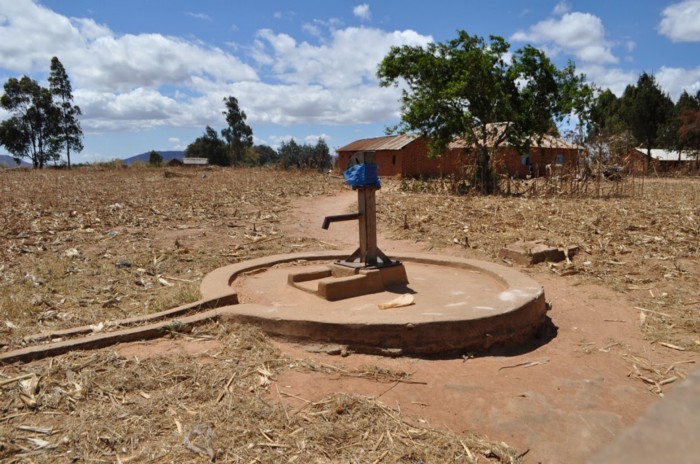What we learn together
The Value of Relationship – A five part series
Part 1: Relationships, not wells, are key to safe water
by Tom Murphy: Reporting Officer, The Water Project
The Water Project does not build wells. We build relationships.
Before dismissing what is seemingly a trite expression, allow me to explain what I mean because it is a crucial distinction that means the difference between contributing to a long history of failure in the water sector and working to achieve lasting access to safe water.
We have learned over the past decade that reliable water matters. Open water sources are reliable but unsafe. Wells are safe but are most often unreliable. But they don’t have to be.
Wells and appropriate water points can be both safe and reliable if strong relationships are in place. In the end, people are going to choose the water source that is most reliable.
Installing a new community well that breaks down months later and forces people to return to collecting water from an unsafe, open water source is a failure. The development graveyards that litter sub-Saharan Africa and Asia are marked with headstones made of the concrete ruins of abandoned wells, incomplete latrines, and broken pumps.
They look like this:

A broken water pump at a primary school in Mlanda, Tanzania. (Credit: Tom Murphy)
So people turn to the most reliable source of water. This:

Open water source less than a mile away from the broken pump. (Credit: Tom Murphy)
I have seen this first hand. Communities in Ghana with latrines that fell apart and a school in Tanzania where the water pump broke down and sat unused for more than a year. I reported on this problem in Tanzania with Jacob Kushner. We found that a push to increase access to water in the country led to the construction of many new wells that eventually broke down due to a lack of ongoing support. Communities were provided new water points and told to take care of them.
Sound familiar?
It is relatively easy to build a well. Buy or rent a rig, hire a team, drill until the proper depth is reached, install a pump, and let the water flow. We could do that by ourselves, an ocean away from the problem. It is what has often been done in this sector over the past few decades. But it doesn’t work.
Recognizing the failures of “independently” providing water points, some organizations did attempt to engage local communities by establishing water committees who supposedly were equipped to care for the new wells. But they usually failed as quickly as the well. Money shortages or lack of availability of parts to repair a broken well defeated the best-organized groups. Community training took a “teach-a-man-to-fish” approach to support a new water point but acted as if it takes only one lesson to master fishing.
Such pseudo-cooperative methods ignored local leaders and experts at the most crucial stages of the project, including planning.
How do we know all this? Because we too have made mistakes. We invested in wells that failed, do not work, or that we can no longer reach to monitor. We tried supporting water user committees that couldn’t support a water point. But, we reengaged and learned the complexity to understand what went wrong. And through this process, we learned how to be better. We learned to depend on our local teams and the communities we joined to help as equally essential contributors throughout the entire process.
That is why we don’t build improved water points, like wells, protected springs, and rainwater harvesting tanks using unaffiliated contractors or even volunteer labor. Instead, we identify, strengthen and work through committed local leaders already at work in development. They become “partners” in our work to provide clean water.
Continue Reading – Part 2: Redefining Partnership
Home More Like ThisTweet